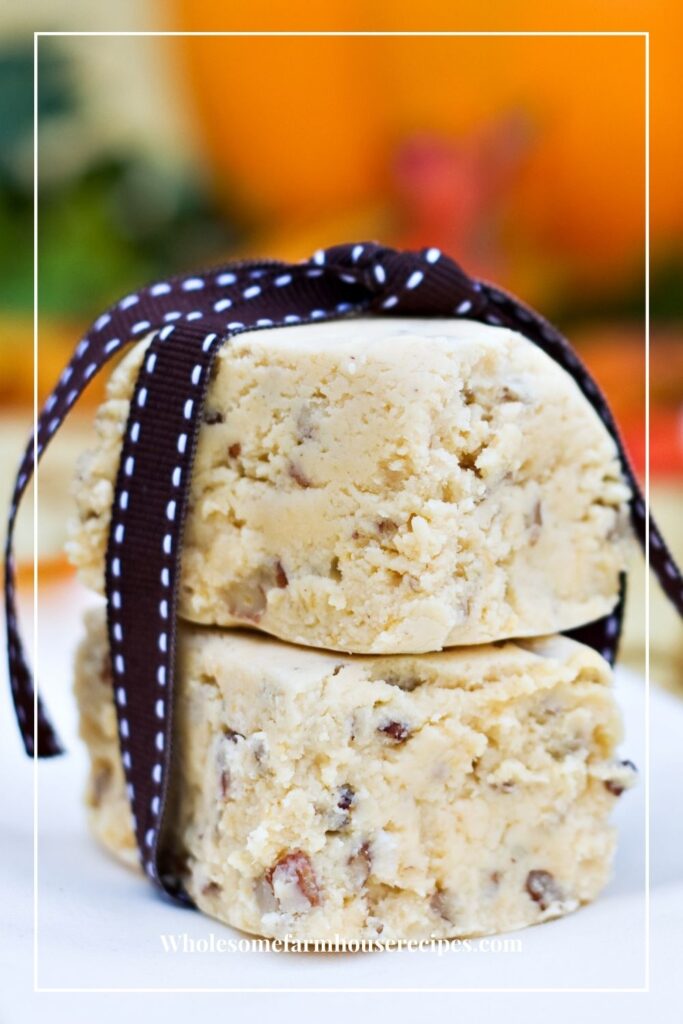How long does fudge last? And is there a way to make it last even longer and extend the long shelf life of fudge? If you’re like me, you love fresh fudge. There’s something about the texture and sweetness that just makes it an irresistible delicious treat with a creamy texture.
Homemade fudge is always a hit with friends and family. I love making it, but as much as we want to keep eating the sweet treats right away, they don’t last nearly long enough. It’s easy to enjoy a few pieces at a time or share with a friend, most likely, you won’t be eating all your homemade treats in one sitting. But how long does leftover fudge last? Here’s how you can store your homemade goodies for maximum longevity.

How long does homemade fudge last?
Storing my recipe the right way in an airtight container keeps the perfect consistency without any drying out. It will last a week or two. This sweet treat can last a few weeks to a few months when stored properly. It’s all about packaging and storing the fudge properly.
What’s the best way to store at room temperature?
Along with using the airtight container, if you’re planning to keep your fudge at room temperature, make sure to layer the pieces of fudge with waxed paper or parchment paper separating the layers. Additionally, to extend the shelf life, keep this treat away from temperature changes, moisture, and light. The best environment is to store the container in a dry and cool place. Pro Tip. In hot climates, it is best to store in the refrigerator.

How Long Does Fudge Last in the Refrigerator?
With proper storage, fudge can last up to 2 to 3 weeks in the refrigerator. Place the pieces of fudge in an airtight container with waxed paper between each layer. This will help keep excess moisture away from the candy.
Depending on the recipe add-ins, such as dairy products, it might be imperative for food safety to refrigerate the fudge.
How Long Does Fudge Last in the Freezer?
Storing fudge in the freezer is a great option because it will last from 2 to 3 months up to a year when stored properly. Freeze in larger blocks or individual pieces.
To assure the longest freezer storage time and best freshness, make sure that the confection is free of any moisture or air.
To do this, use layers of protection. Wrap the candy in wax paper, then aluminum foil or plastic wrap. Next place in an air-tight container or sealed freezer bag. Using this storage method will protect it from freezer burn as well.
Thaw for a few hours before eating for best texture and taste. Pro Tip. if you store the treats in individual smaller pieces. You can take just one or two pieces out at a time and enjoy. They will thaw in a shorter time too.

Does fudge go bad?
Yes, it will eventually go bad. Both store-bought fudge and homemade fudge can go bad. In fact, store-bought will often come with an expiration date.
When it goes bad the quality of fudge is affected, with a change in texture, appearance, and flavor.
When we are on vacation and visiting a candy store, it is too easy to purchase too much fudge in different flavors. Good news, if you store it properly, it can last a long time.
How to know if fudge has gone bad
The best way to determine if it’s gone bad is to look for the following signs of spoilage.
Smell the Fudge. If it smells bad, (sour, like paint thinner, or moldy), the specific add-ins to fudge have most likely gone bad. When there are funny smells, it is better to error on the side of caution. The fudge should be avoided.
Visual Changes. On the surface, look for mold, slimy texture, crumbling texture, or melting. When you see any of these signs, it is best to avoid the confection. While it may not be a food safety issue, it will certainly affect the taste and texture. It is best to toss the candy.
Feel for Changes. If it is soggy, it might be okay to eat if it is within the first week; however, it will depend on what has been added to the recipe. Sometimes, homemade fudge will be soft right away if it is made with peanut butter, cocoa butter, coconut oil, or pumpkin puree. This fudge should be stored in the refrigerator to keep it safe to eat for a longer period. It will also help it firm up a bit.

What Causes Fudge to Go Bad?
If fudge is exposed to air, it will dry out with deep cracks, become grainy, and hard. Store it too hot or expose it to moisture and it can become slimy on the surface or start melting.
What’s the best way to store fudge at room temperature?
Kitchen Essentials
Materials
- Plain Fudge
- Flavored Fudge
Instructions
- Along with using the airtight container, if you’re planning to keep your fudge at room temperature, make sure to layer the pieces of fudge with waxed paper or parchment paper separating the layers.
- Additionally, to extend the shelf life, keep this treat away from temperature changes, moisture, and light.
- The best environment is to store the container in a dry and cool place.
- Pro Tip. In hot climates, it is best to store in the refrigerator.







